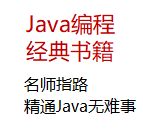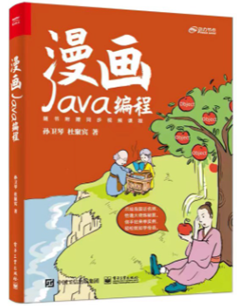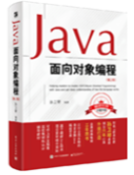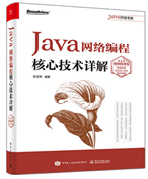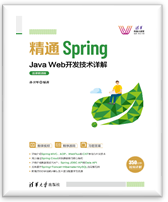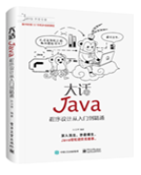|
|
CGLIB原理及实现机制
版权声明:本文遵循 CC 4.0 BY-SA 版权协议,转载请附上原文出处链接和本声明。
本文转自:https://blog.csdn.net/gyshun/article/details/81000997
什么是CGLIB
CGLIB(Code Generator Library)是一个强大的、高性能的代码生成库。其被广泛应用于AOP框架(Spring、dynaop)中,用以提供方法拦截操作。Hibernate作为一个比较受欢迎的ORM框架,同样使用CGLIB来代理单端(多对一和一对一)关联(延迟提取集合使用的另一种机制)。
为什么使用CGLIB
CGLIB代理主要通过对字节码的操作,为对象引入间接级别,以控制对象的访问。我们知道Java中有一个动态代理也是做这个事情的,那我们为什么不直接使用Java动态代理,而要使用CGLIB呢?答案是CGLIB相比于JDK动态代理更加强大,JDK动态代理虽然简单易用,但是其有一个致命缺陷是,只能对接口进行代理。如果要代理的类为一个普通类、没有接口,那么Java动态代理就没法使用了。关于Java动态代理,可以参者这里Java动态代理分析
CGLIB组成结构

CGLIB底层使用了ASM(一个短小精悍的字节码操作框架)来操作字节码生成新的类。除了CGLIB库外,脚本语言(如Groovy何BeanShell)也使用ASM生成字节码。ASM使用类似SAX的解析器来实现高性能。我们不鼓励直接使用ASM,因为它需要对Java字节码的格式足够的了解
例子
说了这么多,可能大家还是不知道CGLIB是干什么用的。下面我们将使用一个简单的例子来演示如何使用CGLIB对一个方法进行拦截。
首先,我们需要在工程的POM文件中引入cglib的dependency,这里我们使用的是2.2.2版本
<dependency>
<groupId>cglib</groupId>
<artifactId>cglib</artifactId>
<version>2.2.2</version>
</dependency> |
依赖包下载后,我们就可以干活了,按照国际惯例,写个hello world
public class SampleClass {
public void test(){
System.out.println("hello world");
}
public static void main(String[] args) {
Enhancer enhancer = new Enhancer();
enhancer.setSuperclass(SampleClass.class);
enhancer.setCallback(new MethodInterceptor() {
@Override
public Object intercept(Object obj, Method method, Object[] args, MethodProxy proxy) throws Throwable {
System.out.println("before method run...");
Object result = proxy.invokeSuper(obj, args);
System.out.println("after method run...");
return result;
}
});
SampleClass sample = (SampleClass) enhancer.create();
sample.test();
}
} |
在mian函数中,我们通过一个Enhancer和一个MethodInterceptor来实现对方法的拦截,运行程序后输出为:
before method run...
hello world
after method run...
在上面的程序中,我们引入了Enhancer和MethodInterceptor,可能有些读者还不太了解。别急,我们后面将会一一进行介绍。就目前而言,一个使用CGLIB的小demo就完成了
常用的API
目前网络上对CGLIB的介绍资料比较少,造成对cglib的学习困难。这里我将对cglib中的常用类进行一个介绍。为了避免解释的不清楚,我将为每个类都配有一个demo,用来做进一步的说明。首先就从Enhancer开始吧。
Enhancer
Enhancer可能是CGLIB中最常用的一个类,和Java1.3动态代理中引入的Proxy类差不多(如果对Proxy不懂,可以参考这里)。和Proxy不同的是,Enhancer既能够代理普通的class,也能够代理接口。Enhancer创建一个被代理对象的子类并且拦截所有的方法调用(包括从Object中继承的toString和hashCode方法)。Enhancer不能够拦截final方法,例如Object.getClass()方法,这是由于Java final方法语义决定的。基于同样的道理,Enhancer也不能对fianl类进行代理操作。这也是Hibernate为什么不能持久化final class的原因。
public class SampleClass {
public String test(String input){
return "hello world";
}
} |
下面我们将以这个类作为主要的测试类,来测试调用各种方法
@Test
public void testFixedValue(){
Enhancer enhancer = new Enhancer();
enhancer.setSuperclass(SampleClass.class);
enhancer.setCallback(new FixedValue() {
@Override
public Object loadObject() throws Exception {
return "Hello cglib";
}
});
SampleClass proxy = (SampleClass) enhancer.create();
System.out.println(proxy.test(null)); //拦截test,输出Hello cglib
System.out.println(proxy.toString());
System.out.println(proxy.getClass());
System.out.println(proxy.hashCode());
} |
程序的输出为:
Hello cglib
Hello cglib
class com.zeus.cglib.SampleClass$$EnhancerByCGLIB$$e3ea9b7
java.lang.ClassCastException: java.lang.String cannot be cast to java.lang.Number
at com.zeus.cglib.SampleClass$$EnhancerByCGLIB$$e3ea9b7.hashCode(<generated>)
...
上述代码中,FixedValue用来对所有拦截的方法返回相同的值,从输出我们可以看出来,Enhancer对非final方法test()、toString()、hashCode()进行了拦截,没有对getClass进行拦截。由于hashCode()方法需要返回一个Number,但是我们返回的是一个String,这解释了上面的程序中为什么会抛出异常。
Enhancer.setSuperclass用来设置父类型,从toString方法可以看出,使用CGLIB生成的类为被代理类的一个子类,形如:SampleClass$$EnhancerByCGLIB$$e3ea9b7
Enhancer.create(Object…)方法是用来创建增强对象的,其提供了很多不同参数的方法用来匹配被增强类的不同构造方法。(虽然类的构造放法只是Java字节码层面的函数,但是Enhancer却不能对其进行操作。Enhancer同样不能操作static或者final类)。我们也可以先使用Enhancer.createClass()来创建字节码(.class),然后用字节码动态的生成增强后的对象。
可以使用一个InvocationHandler(如果对InvocationHandler不懂,可以参考这里)作为回调,使用invoke方法来替换直接访问类的方法,但是你必须注意死循环。因为invoke中调用的任何原代理类方法,均会重新代理到invoke方法中。
public void testInvocationHandler() throws Exception{
Enhancer enhancer = new Enhancer();
enhancer.setSuperclass(SampleClass.class);
enhancer.setCallback(new InvocationHandler() {
@Override
public Object invoke(Object proxy, Method method, Object[] args) throws Throwable {
if(method.getDeclaringClass() != Object.class && method.getReturnType() == String.class){
return "hello cglib";
}else{
throw new RuntimeException("Do not know what to do");
}
}
});
SampleClass proxy = (SampleClass) enhancer.create();
Assert.assertEquals("hello cglib", proxy.test(null));
Assert.assertNotEquals("Hello cglib", proxy.toString());
} |
为了避免这种死循环,我们可以使用MethodInterceptor,MethodInterceptor的例子在前面的hello world中已经介绍过了,这里就不浪费时间了。
有些时候我们可能只想对特定的方法进行拦截,对其他的方法直接放行,不做任何操作,使用Enhancer处理这种需求同样很简单,只需要一个CallbackFilter即可:
@Test
public void testCallbackFilter() throws Exception{
Enhancer enhancer = new Enhancer();
CallbackHelper callbackHelper = new CallbackHelper(SampleClass.class, new Class[0]) {
@Override
protected Object getCallback(Method method) {
if(method.getDeclaringClass() != Object.class && method.getReturnType() == String.class){
return new FixedValue() {
@Override
public Object loadObject() throws Exception {
return "Hello cglib";
}
};
}else{
return NoOp.INSTANCE;
}
}
};
enhancer.setSuperclass(SampleClass.class);
enhancer.setCallbackFilter(callbackHelper);
enhancer.setCallbacks(callbackHelper.getCallbacks());
SampleClass proxy = (SampleClass) enhancer.create();
Assert.assertEquals("Hello cglib", proxy.test(null));
Assert.assertNotEquals("Hello cglib",proxy.toString());
System.out.println(proxy.hashCode());
} |
ImmutableBean
通过名字就可以知道,不可变的Bean。ImmutableBean允许创建一个原来对象的包装类,这个包装类是不可变的,任何改变底层对象的包装类操作都会抛出IllegalStateException。但是我们可以通过直接操作底层对象来改变包装类对象。这有点类似于Guava中的不可变视图
为了对ImmutableBean进行测试,这里需要再引入一个bean
public class SampleBean {
private String value;
public SampleBean() {
}
public SampleBean(String value) {
this.value = value;
}
public String getValue() {
return value;
}
public void setValue(String value) {
this.value = value;
}
} |
然后编写测试类如下:
@Test(expected = IllegalStateException.class)
public void testImmutableBean() throws Exception{
SampleBean bean = new SampleBean();
bean.setValue("Hello world");
SampleBean immutableBean = (SampleBean) ImmutableBean.create(bean); //创建不可变类
Assert.assertEquals("Hello world",immutableBean.getValue());
bean.setValue("Hello world, again"); //可以通过底层对象来进行修改
Assert.assertEquals("Hello world, again", immutableBean.getValue());
immutableBean.setValue("Hello cglib"); //直接修改将throw exception
} |
Bean generator
cglib提供的一个操作bean的工具,使用它能够在运行时动态的创建一个bean。
@Test
public void testBeanGenerator() throws Exception{
BeanGenerator beanGenerator = new BeanGenerator();
beanGenerator.addProperty("value",String.class);
Object myBean = beanGenerator.create();
Method setter = myBean.getClass().getMethod("setValue",String.class);
setter.invoke(myBean,"Hello cglib");
Method getter = myBean.getClass().getMethod("getValue");
Assert.assertEquals("Hello cglib",getter.invoke(myBean));
} |
在上面的代码中,我们使用cglib动态的创建了一个和SampleBean相同的Bean对象,包含一个属性value以及getter、setter方法
Bean Copier
cglib提供的能够从一个bean复制到另一个bean中,而且其还提供了一个转换器,用来在转换的时候对bean的属性进行操作。
public class OtherSampleBean {
private String value;
public String getValue() {
return value;
}
public void setValue(String value) {
this.value = value;
}
}
@Test
public void testBeanCopier() throws Exception{
BeanCopier copier = BeanCopier.create(SampleBean.class, OtherSampleBean.class, false);//设置为true,则使用converter
SampleBean myBean = new SampleBean();
myBean.setValue("Hello cglib");
OtherSampleBean otherBean = new OtherSampleBean();
copier.copy(myBean, otherBean, null); //设置为true,则传入converter指明怎么进行转换
assertEquals("Hello cglib", otherBean.getValue());
} |
BulkBean
相比于BeanCopier,BulkBean将copy的动作拆分为getPropertyValues和setPropertyValues两个方法,允许自定义处理属性
@Test
public void testBulkBean() throws Exception{
BulkBean bulkBean = BulkBean.create(SampleBean.class,
new String[]{"getValue"},
new String[]{"setValue"},
new Class[]{String.class});
SampleBean bean = new SampleBean();
bean.setValue("Hello world");
Object[] propertyValues = bulkBean.getPropertyValues(bean);
assertEquals(1, bulkBean.getPropertyValues(bean).length);
assertEquals("Hello world", bulkBean.getPropertyValues(bean)[0]);
bulkBean.setPropertyValues(bean,new Object[]{"Hello cglib"});
assertEquals("Hello cglib", bean.getValue());
} |
使用注意:
1. 避免每次进行BulkBean.create创建对象,一般将其声明为static的
2. 应用场景:针对特定属性的get,set操作,一般适用通过xml配置注入和注出的属性,运行时才确定处理的Source,Target类,只需要关注属性名即可。
BeanMap
BeanMap类实现了Java Map,将一个bean对象中的所有属性转换为一个String-to-Obejct的Java Map
@Test
public void testBeanMap() throws Exception{
BeanGenerator generator = new BeanGenerator();
generator.addProperty("username",String.class);
generator.addProperty("password",String.class);
Object bean = generator.create();
Method setUserName = bean.getClass().getMethod("setUsername", String.class);
Method setPassword = bean.getClass().getMethod("setPassword", String.class);
setUserName.invoke(bean, "admin");
setPassword.invoke(bean,"password");
BeanMap map = BeanMap.create(bean);
Assert.assertEquals("admin", map.get("username"));
Assert.assertEquals("password", map.get("password"));
} |
我们使用BeanGenerator生成了一个含有两个属性的Java Bean,对其进行赋值操作后,生成了一个BeanMap对象,通过获取值来进行验证
keyFactory
keyFactory类用来动态生成接口的实例,接口需要只包含一个newInstance方法,返回一个Object。keyFactory为构造出来的实例动态生成了Object.equals和Object.hashCode方法,能够确保相同的参数构造出的实例为单例的。
public interface SampleKeyFactory {
Object newInstance(String first, int second);
} |
我们首先构造一个满足条件的接口,然后进行测试
@Test
public void testKeyFactory() throws Exception{
SampleKeyFactory keyFactory = (SampleKeyFactory) KeyFactory.create(SampleKeyFactory.class);
Object key = keyFactory.newInstance("foo", 42);
Object key1 = keyFactory.newInstance("foo", 42);
Assert.assertEquals(key,key1);//测试参数相同,结果是否相等
} |
Mixin(混合)
Mixin能够让我们将多个对象整合到一个对象中去,前提是这些对象必须是接口的实现。可能这样说比较晦涩,以代码为例:
public class MixinInterfaceTest {
interface Interface1{
String first();
}
interface Interface2{
String second();
}
class Class1 implements Interface1{
@Override
public String first() {
return "first";
}
}
class Class2 implements Interface2{
@Override
public String second() {
return "second";
}
}
interface MixinInterface extends Interface1, Interface2
}
@Test
public void testMixin() throws Exception{
Mixin mixin = Mixin.create(new Class[]{Interface1.class, Interface2.class,
MixinInterface.class}, new Object[]{new Class1(),new Class2()});
MixinInterface mixinDelegate = (MixinInterface) mixin;
assertEquals("first", mixinDelegate.first());
assertEquals("second", mixinDelegate.second());
}
} |
Mixin类比较尴尬,因为他要求Minix的类(例如MixinInterface)实现一些接口。既然被Minix的类已经实现了相应的接口,那么我就直接可以通过纯Java的方式实现,没有必要使用Minix类。
String switcher
用来模拟一个String到int类型的Map类型。如果在Java7以后的版本中,类似一个switch语句。
@Test
public void testStringSwitcher() throws Exception{
String[] strings = new String[]{"one", "two"};
int[] values = new int[]{10,20};
StringSwitcher stringSwitcher = StringSwitcher.create(strings,values,true);
assertEquals(10, stringSwitcher.intValue("one"));
assertEquals(20, stringSwitcher.intValue("two"));
assertEquals(-1, stringSwitcher.intValue("three"));
} |
Interface Maker
正如名字所言,Interface Maker用来创建一个新的Interface
@Test
public void testInterfaceMarker() throws Exception{
Signature signature = new Signature("foo", Type.DOUBLE_TYPE, new Type[]{Type.INT_TYPE});
InterfaceMaker interfaceMaker = new InterfaceMaker();
interfaceMaker.add(signature, new Type[0]);
Class iface = interfaceMaker.create();
assertEquals(1, iface.getMethods().length);
assertEquals("foo", iface.getMethods()[0].getName());
assertEquals(double.class, iface.getMethods()[0].getReturnType());
} |
上述的Interface Maker创建的接口中只含有一个方法,签名为double foo(int)。Interface Maker与上面介绍的其他类不同,它依赖ASM中的Type类型。由于接口仅仅只用做在编译时期进行类型检查,因此在一个运行的应用中动态的创建接口没有什么作用。但是InterfaceMaker可以用来自动生成代码,为以后的开发做准备。
Method delegate
MethodDelegate主要用来对方法进行代理
interface BeanDelegate{
String getValueFromDelegate();
}
@Test
public void testMethodDelegate() throws Exception{
SampleBean bean = new SampleBean();
bean.setValue("Hello cglib");
BeanDelegate delegate = (BeanDelegate) MethodDelegate.create(bean,"getValue", BeanDelegate.class);
assertEquals("Hello cglib", delegate.getValueFromDelegate());
} |
关于Method.create的参数说明:
1. 第二个参数为即将被代理的方法
2. 第一个参数必须是一个无参数构造的bean。因此MethodDelegate.create并不是你想象的那么有用
3. 第三个参数为只含有一个方法的接口。当这个接口中的方法被调用的时候,将会调用第一个参数所指向bean的第二个参数方法
缺点:
1. 为每一个代理类创建了一个新的类,这样可能会占用大量的永久代堆内存
2. 你不能代理需要参数的方法
3. 如果你定义的接口中的方法需要参数,那么代理将不会工作,并且也不会抛出异常;如果你的接口中方法需要其他的返回类型,那么将抛出IllegalArgumentException
MulticastDelegate
1.多重代理和方法代理差不多,都是将代理类方法的调用委托给被代理类。使用前提是需要一个接口,以及一个类实现了该接口
2.通过这种interface的继承关系,我们能够将接口上方法的调用分散给各个实现类上面去。
3.多重代理的缺点是接口只能含有一个方法,如果被代理的方法拥有返回值,那么调用代理类的返回值为最后一个添加的被代理类的方法返回值
public interface DelegatationProvider {
void setValue(String value);
}
public class SimpleMulticastBean implements DelegatationProvider {
private String value;
@Override
public void setValue(String value) {
this.value = value;
}
public String getValue() {
return value;
}
}
@Test
public void testMulticastDelegate() throws Exception{
MulticastDelegate multicastDelegate = MulticastDelegate.create(DelegatationProvider.class);
SimpleMulticastBean first = new SimpleMulticastBean();
SimpleMulticastBean second = new SimpleMulticastBean();
multicastDelegate = multicastDelegate.add(first);
multicastDelegate = multicastDelegate.add(second);
DelegatationProvider provider = (DelegatationProvider) multicastDelegate;
provider.setValue("Hello world");
assertEquals("Hello world", first.getValue());
assertEquals("Hello world", second.getValue());
} |
Constructor delegate
为了对构造函数进行代理,我们需要一个接口,这个接口只含有一个Object newInstance(…)方法,用来调用相应的构造函数
interface SampleBeanConstructorDelegate{
Object newInstance(String value);
}
/**
* 对构造函数进行代理
* @throws Exception
*/
@Test
public void testConstructorDelegate() throws Exception{
SampleBeanConstructorDelegate constructorDelegate = (SampleBeanConstructorDelegate) ConstructorDelegate.create(
SampleBean.class, SampleBeanConstructorDelegate.class);
SampleBean bean = (SampleBean) constructorDelegate.newInstance("Hello world");
assertTrue(SampleBean.class.isAssignableFrom(bean.getClass()));
System.out.println(bean.getValue());
} |
Parallel Sorter(并行排序器)
能够对多个数组同时进行排序,目前实现的算法有归并排序和快速排序
@Test
public void testParallelSorter() throws Exception{
Integer[][] value = {
{4, 3, 9, 0},
{2, 1, 6, 0}
};
ParallelSorter.create(value).mergeSort(0);
for(Integer[] row : value){
int former = -1;
for(int val : row){
assertTrue(former < val);
former = val;
}
}
} |
FastClass
顾明思义,FastClass就是对Class对象进行特定的处理,比如通过数组保存method引用,因此FastClass引出了一个index下标的新概念,比如getIndex(String name, Class[] parameterTypes)就是以前的获取method的方法。通过数组存储method,constructor等class信息,从而将原先的反射调用,转化为class.index的直接调用,从而体现所谓的FastClass。
@Test
public void testFastClass() throws Exception{
FastClass fastClass = FastClass.create(SampleBean.class);
FastMethod fastMethod = fastClass.getMethod("getValue",new Class[0]);
SampleBean bean = new SampleBean();
bean.setValue("Hello world");
assertEquals("Hello world",fastMethod.invoke(bean, new Object[0]));
} |
注意
由于CGLIB的大部分类是直接对Java字节码进行操作,这样生成的类会在Java的永久堆中。如果动态代理操作过多,容易造成永久堆满,触发OutOfMemory异常。
CGLIB和Java动态代理的区别
Java动态代理只能够对接口进行代理,不能对普通的类进行代理(因为所有生成的代理类的父类为Proxy,Java类继承机制不允许多重继承);CGLIB能够代理普通类;
Java动态代理使用Java原生的反射API进行操作,在生成类上比较高效;CGLIB使用ASM框架直接对字节码进行操作,在类的执行过程中比较高效
程序猿的技术大观园:www.javathinker.net
|
|

